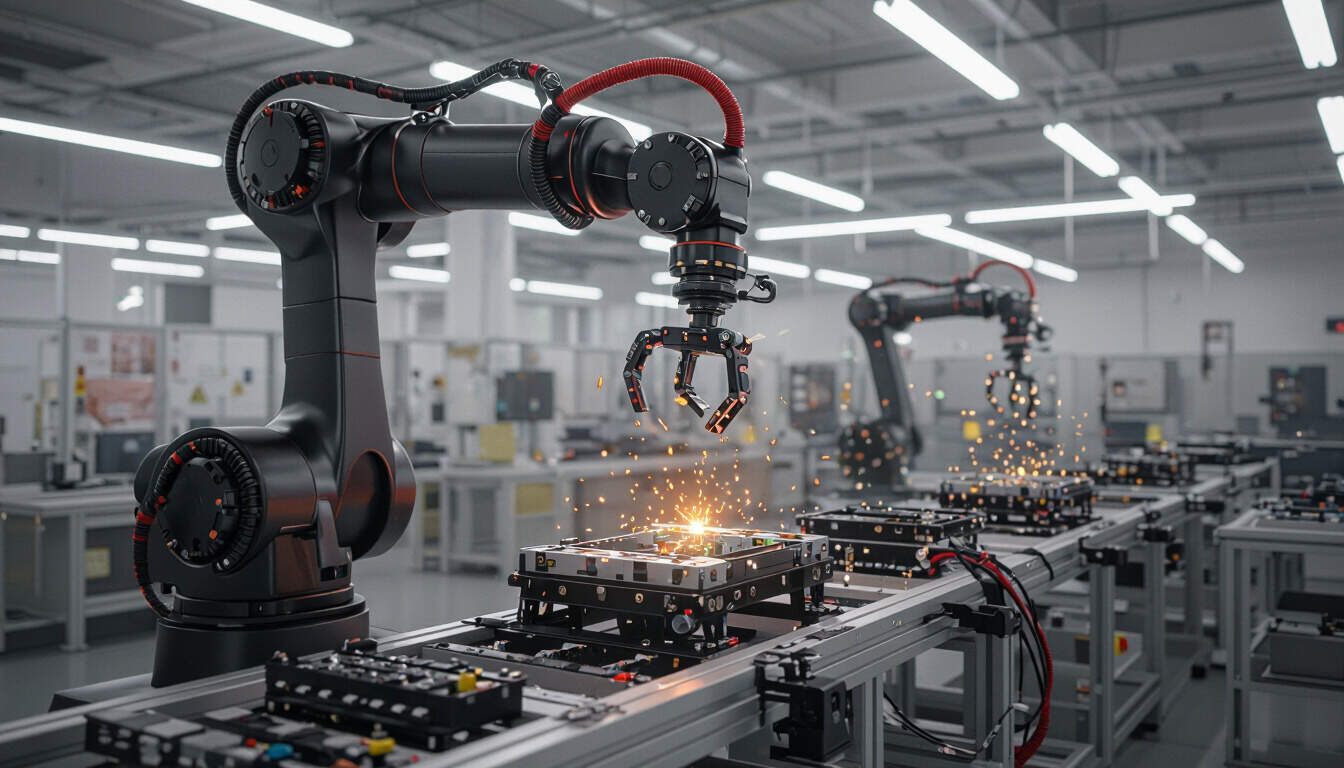Feedback Cycles in Advanced Robotics
 by Max Miller
by Max Miller
Advanced robotics relies on feedback cycles to drive rapid improvements in technology, business efficiency, and personal skills. This article explores how these cycles foster exponential growth, offering insights for innovators and professionals seeking to optimize performance.

Feedback cycles play a central role in the development and application of advanced robotics. These systems use continuous loops of data input and output to refine operations over time. For instance, in robotics, sensors provide real-time information that robots use to adjust their actions instantly.
In technology, advanced robotics often involves machine learning algorithms. These algorithms process vast amounts of data from previous tasks, allowing machines to improve accuracy with each iteration. A feedback cycle in this context might involve a robot performing a task, analyzing errors, and then applying corrections for future attempts. This process leads to faster learning curves, where improvements compound quickly.
One example is in manufacturing, where robotic arms assemble products. Initially, these arms might have slight inaccuracies, but through repeated cycles, they achieve precision that humans cannot match. This not only boosts productivity but also sets the stage for broader innovations.
Moving to business, advanced robotics transforms operations by creating efficient workflows. Companies integrate automation to handle repetitive tasks, freeing human employees for more creative work. Feedback cycles here mean that data from robotic performance informs business decisions, such as resource allocation or process tweaks. Over time, this results in exponential gains in efficiency and cost savings.
For businesses adopting these technologies, the key is monitoring performance metrics. By doing so, organizations can identify patterns and make adjustments that lead to sustained growth. In sectors like logistics, robots equipped with AI navigate warehouses, learning from each delivery to optimize routes and reduce delays.
Personal development also benefits from the principles of feedback cycles found in advanced robotics. Individuals can apply similar strategies to enhance their skills. For example, a professional learning to code might use software simulations, much like a robot uses trial runs. Each attempt provides feedback, allowing for incremental improvements that build upon one another.
This approach fosters a mindset of continuous learning. In fields like engineering, where innovation is key, people draw inspiration from robotic systems. They set personal goals, review outcomes, and refine their methods, mirroring the loops in advanced robotics.
To illustrate, consider a scientist working on robotic prototypes. After testing a design, they gather data on failures and successes, then iterate. This cycle not only advances their project but also hones their problem-solving abilities, leading to personal growth that compounds over time.
In education, tools like robotic kits teach students through hands-on experience. Learners program devices, observe results, and adjust code based on outcomes. Such activities demonstrate how feedback cycles can accelerate skill acquisition, preparing individuals for careers in technology.
The impact of these cycles extends to societal levels. As advanced robotics becomes more prevalent, it drives economic shifts. Industries that embrace automation see increased output, which in turn creates demand for new roles in oversight and maintenance. This creates a ripple effect, where initial investments in robotics lead to broader opportunities.
Challenges do arise, such as ensuring ethical use of data in feedback loops. Developers must focus on creating systems that are reliable and adaptable. By prioritizing quality data, they can avoid pitfalls and maximize benefits.
Looking ahead, the integration of advanced robotics with other technologies promises even greater advancements. For instance, combining robotics with emerging tools could enhance feedback cycles further, opening doors to new applications in healthcare and exploration.
In summary, feedback cycles in advanced robotics offer a blueprint for growth across various domains. By leveraging these mechanisms, individuals and organizations can achieve remarkable progress, turning iterative improvements into exponential successes.
Key Benefits in Technology
- Enhanced precision through data analysis
- Faster adaptation to new tasks
- Reduced error rates over time
Applications in Business
- Streamlined production processes
- Improved resource management
- Data-driven decision making
Strategies for Personal Growth
- Regular self-assessment of skills
- Iterative learning approaches
- Application of technology-inspired methods
